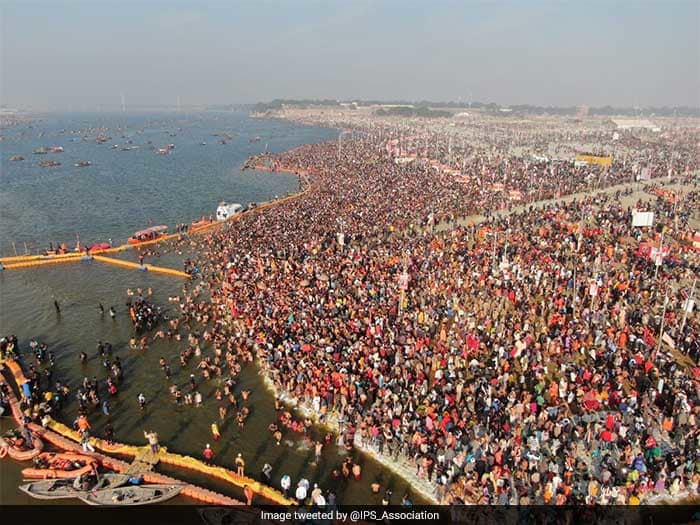-
KumbhMela is held every four times every 12 years at four different locations across central and northern India.
-
It is the largest religious congregation and largest peaceful gathering on planet.
-
This vast celebration attracts tens of millions of Hindu pilgrims, including mendicant nagas.
-
The first written evidence of the Kumbha Mela is mentioned in Bhagvat Purana.
-
Another written evidence of Kumbha Mela is in works of Huen Tsang, who visited India in 629–645 AD, during reign of Harsha.
-
The Samudra manthan episode also has mentioned in Bhagavata Purana, Vishnu Purana, Mahabharata, and Ramayana.
-
Kumbh Mela is held every third year at one of four places by rotation:
-
Haridwar on the Ganges in Uttarakhand
-
Ujjain on the Shipra in Madhya Pradesh
-
Nashik on the Godavari in Maharashtra
-
Prayagraj at the confluence of the Ganges, the Yamuna, and the mythical Sarasvati in Uttar Pradesh
-
Thus, it is held at each of these four places every twelfth year.
-
Ardha Kumbha Mela, which is next in sanctity, is held only at Haridwar and Allahabad.
-
The rivers at these four places are Ganga at Haridwar, Prayag Sangam at Allahabad, Godawari at Nashik, and Shipra at Ujjain.
-
The largest crowd is held on Mauni Amavasya.
-
India, known for its heritage and cultural diversity has 13 cultural heritages in the UNESCO’s intangible cultural heritage list.
-
“Kumbh Mela” was the latest addition to the list.
